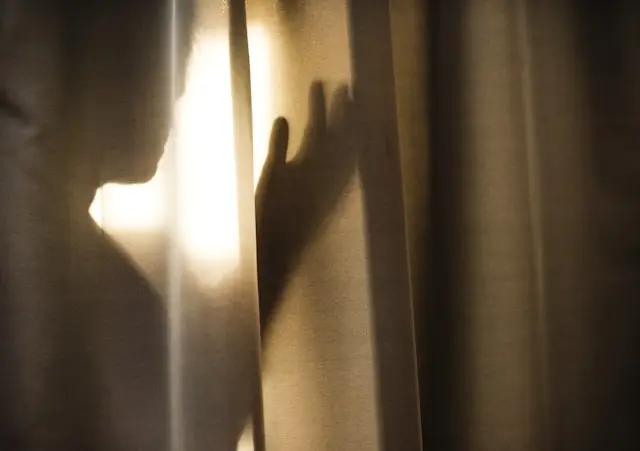Shadow Work in Jungian Psychology: A Spiritual Gateway to the Self
Introduction: Meeting the Unseen Self
Every one of us carries a hidden side—a collection of traits, emotions, and memories we’d rather keep out of sight. Swiss psychiatrist Carl Jung called this the shadow: the unconscious part of ourselves that holds what we deny, repress, or simply forget. While the idea of facing this shadow may sound daunting, Jung believed that shadow work is essential for healing, integration, and spiritual wholeness.
In today’s world, shadow work has become a popular spiritual practice, offering modern seekers a way to reconcile inner conflicts, deepen self-awareness, and awaken to a more authentic life.
What Is the Shadow in Jungian Psychology?
The shadow is not “evil” in itself—it is simply the unacknowledged. It may contain anger, jealousy, and fear, but also gifts and talents we suppress out of fear of rejection.
Jung described the shadow as a counterpart to the ego, the conscious part of our identity. By repressing parts of ourselves to “fit in,” we create an inner split. The shadow holds these neglected aspects, waiting for us to turn and face them.
A Simple Example
Imagine someone raised to “always be nice.” Their anger is pushed down, labelled as “bad.” Yet, when ignored, this anger may surface in passive aggression, envy, or self-criticism. Recognising this hidden anger through shadow work doesn’t make the person “worse”—it makes them more whole.
Why Is Shadow Work Important?
Shadow work is not just a psychological exercise—it is a path to spiritual growth. By embracing the shadow, we break free from self-deception and move towards authenticity.
Key Benefits of Shadow Work
Greater self-awareness – You begin to see hidden patterns in thoughts and behaviours.
Improved relationships – By owning your projections, you reduce blame and increase compassion.
Emotional healing – Repressed wounds, when acknowledged, begin to soften and release.
Spiritual depth – Many mystics across traditions emphasise self-knowledge as the foundation of awakening. Shadow work becomes a gateway to this deeper journey.
Shadow Work and the Path of Individuation
For Jung, the ultimate goal was individuation—the process of becoming whole by integrating the conscious and unconscious aspects of the self. Shadow work is a central step in this process.
When we integrate the shadow, we no longer live fragmented lives. Instead, we begin to embody a fuller truth of who we are. As Jung himself wrote:
“One does not become enlightened by imagining figures of light, but by making the darkness conscious.”
This quote highlights the paradox: true light emerges when we dare to face the dark.
How to Begin Shadow Work (Practical Steps)
1. Cultivate Self-Observation
Notice your emotional triggers. When someone irritates you, ask: What does this reveal about me? Projection often reveals shadow material.
2. Keep a Shadow Journal
Write freely about uncomfortable emotions, dreams, or recurring conflicts. Jung considered dreams a key pathway to the unconscious, offering symbolic clues to the shadow.
3. Practise Inner Dialogue
Try active imagination, a Jungian technique. In meditation, visualise meeting your shadow. Ask it questions. Listen with curiosity, not judgement.
4. Seek Support
Shadow work can stir deep emotions. Working with a therapist trained in Jungian or depth psychology provides safety and guidance.
5. Balance with Compassion Practices
Because shadow work is intense, pair it with grounding practices—breathwork, mindfulness, or self-compassion meditations. This balance prevents overwhelm and supports integration.
Shadow Work in Spiritual Traditions
Though Jung framed shadow work in psychological terms, its echoes appear in many traditions:
Christian Mysticism – The Desert Fathers spoke of confronting inner demons as part of purification.
Buddhism – Meditation reveals hidden attachments and aversions, allowing us to see the mind clearly.
Taoism – The yin–yang symbol reflects the balance of light and dark, each containing a seed of the other.
These parallels suggest that shadow work is not only psychological—it is also deeply spiritual. By facing the shadow, we step onto the timeless path of self-realisation.
Common Misunderstandings About Shadow Work
“Isn’t shadow work dangerous?”
Shadow work is not about diving recklessly into trauma. It’s about gentle awareness and integration. Done with patience (and professional support when needed), it is safe and healing.
“Does shadow work mean focusing only on negativity?”
No. While it involves facing discomfort, shadow work also uncovers hidden strengths and creativity that were buried in the unconscious.
“Is shadow work the same as therapy?”
Shadow work overlaps with psychotherapy, but in spiritual practice it becomes a path to wholeness and awakening, not just symptom relief.
Quick FAQ
What is shadow work in Jungian psychology?
Shadow work is the process of recognising and integrating the unconscious aspects of yourself—traits, emotions, and memories you repress or deny.
Why is shadow work important?
It helps you heal emotional wounds, reduce projections in relationships, and grow spiritually by moving towards wholeness.
How do you practise shadow work?
Begin by observing your triggers, journaling, exploring dreams, and practising self-reflection. Professional support can deepen the process.
Is shadow work only about negativity?
No, it also reveals hidden gifts and strengths that enrich your authentic self.
Conclusion: Walking Through the Gateway
Shadow work is not about “fixing” yourself—it is about embracing your wholeness. In Jungian psychology, it becomes a spiritual gateway: by making peace with the hidden self, we awaken to the deeper Self beyond the ego.
This is a journey both ancient and urgently modern. To walk it is to discover that your shadow is not an enemy, but a teacher—a guide leading you home to yourself.
Additional Resources
Why not treat yourself to a Meditation Retreat in the beautiful Devon Countryside?
This post may also interest you: The Dark Night of the Soul
Best Wishes,
David.
© D. R. Durham, All rights reserved, 2025.




